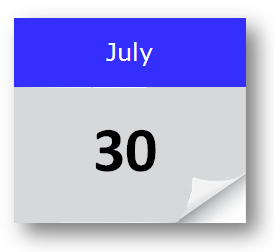In 1880 Vanuatu Gained Independence from the joint British–French condominium.
The Islands of Vanuatu had been visited by various European explorers since the 17th century but it was Captain James Cook who landed on the islands on the 17th of July 1774 and named them ‘New Hebrides’.
In the mid 1800’s plantation owners in Australia and Fiji began to encourage of kidnap thousands of native Vanuatu males, forcing them to work on their sugar and cotton plantations- the practice was known as “blackbirding”.
In 1839 two British missionaries from the London Missionary Society arrived in Erromango Island, and as many of the indigenous population were cannibals, they were killed and eaten. Not perturbed by this missionaries continued to arrive on the islands and began to impose their beliefs on the natives and attempting to stop them from drinking alcohol, dancing, polygamy and practicing cannibalism. On the 16th of October 1887 France and Britain established a joint naval commission on the island to protect their own citizens that had migrated there.
The number of European settlers continued to grow with 2,000 French, 1,000 English living among the 65,000 native inhabitants of Vanuatu by 1906. In that same year France and the United Kingdom began the British–French condominium of the island. Each nation would govern their own people but the natives were governed by both France and Britain. This produced a lot of confusion on the island with two governments, two sets of laws, police, health services, currencies, education systems and prisons. The French inhabitants also drove on the right hand side of the road while the British drove on the left.
In the 1960’s the native inhabitance of Vanuatu expressed their desire for self governance and on the 30th of July 1980 they gained their independence.
In 1971 the Lunar Rover was first used when Apollo 15 landed on the moon.
On the 26th of July 1971 NASA’s Apollo 15 mission (the fourth manned moon landing mission by the United States) was launched. After the three day trip to the moon Command module pilot, Alfred Worden, stayed in orbit around the moon while the Lunar Module pilot, James Irwin, landed safely on the lunar surface on the 30th of July. Also on board the Lunar Module was Commander David Scott and NASA’s newest gadget, the Luna Rover or Lunar Roving Vehicle (LRV).
Out of Irwin’s and Scott’s three day stay on the moon they spent a record 18 hours and 33 minutes (in three separate trips) outside the Luna Module. The addition of the Rover meant that they could personally explore more of the lunar surface than had previously been possible. The Luna Rover used in this mission cost $40,000,000 (or £16,666,000 in 1971) and could reach speeds of 16kph or 10mph on the moons surface.
When Irwin and Scott lifted off the moon in the Lunar Module on the 2nd of August 1971 they left behind the Luna Rover. This allowed the Rover to film the take off of the Lunar Module for the first time and the images were televised in the US. After their rendezvous with Worden and the Command Module the crew landed safely in the Pacific Ocean on the 7th of August 1971. Two more NASA missions to the moon also used Lunar Rovers (Apollo 16 and 17) both of them leaving the Rovers behind and the Rovers and even the tracks they made are still visible on the moons surface.
